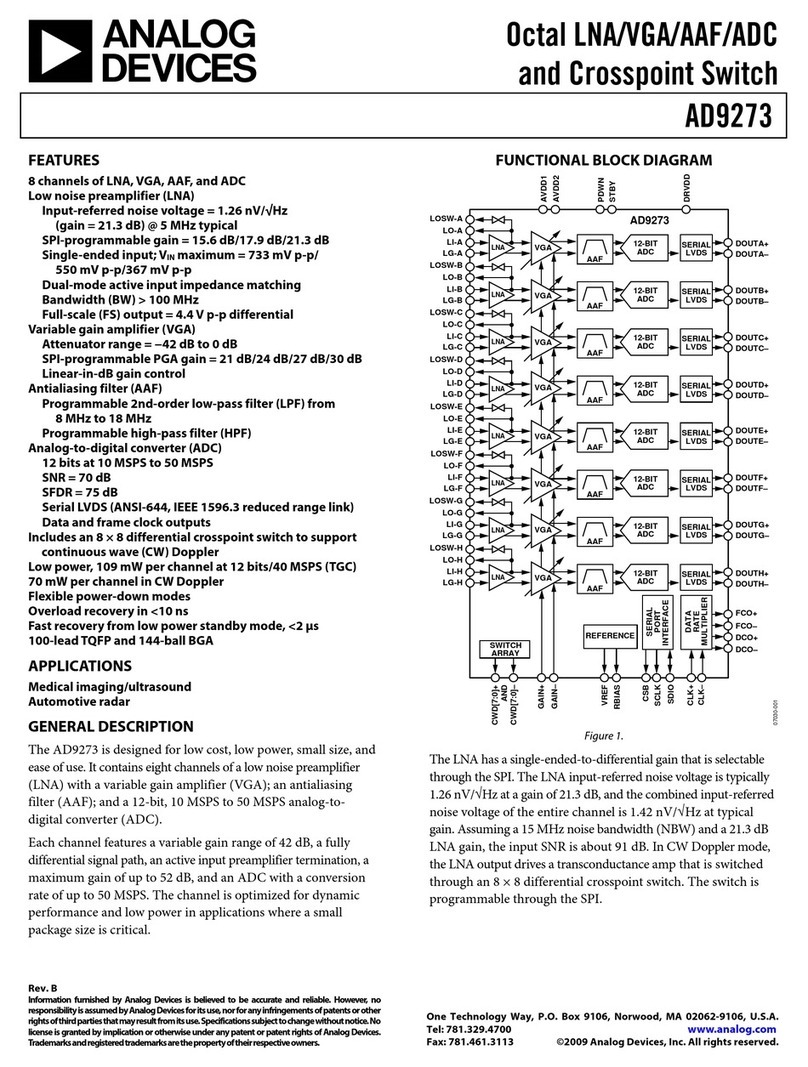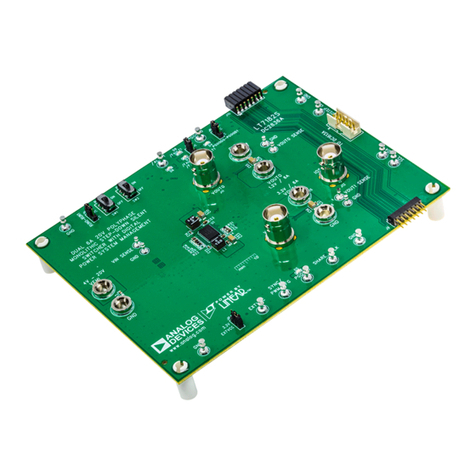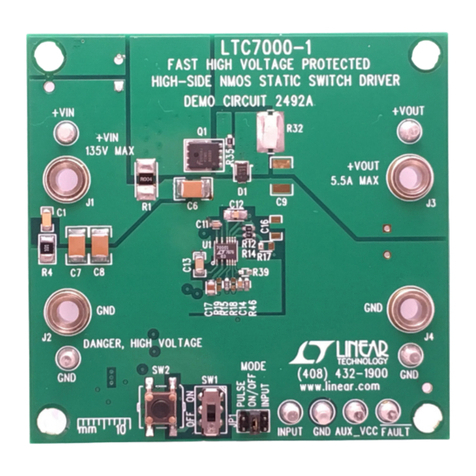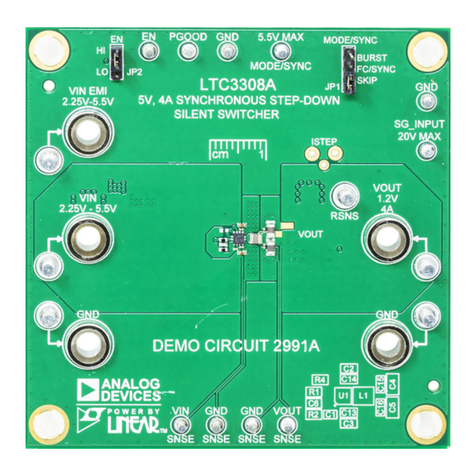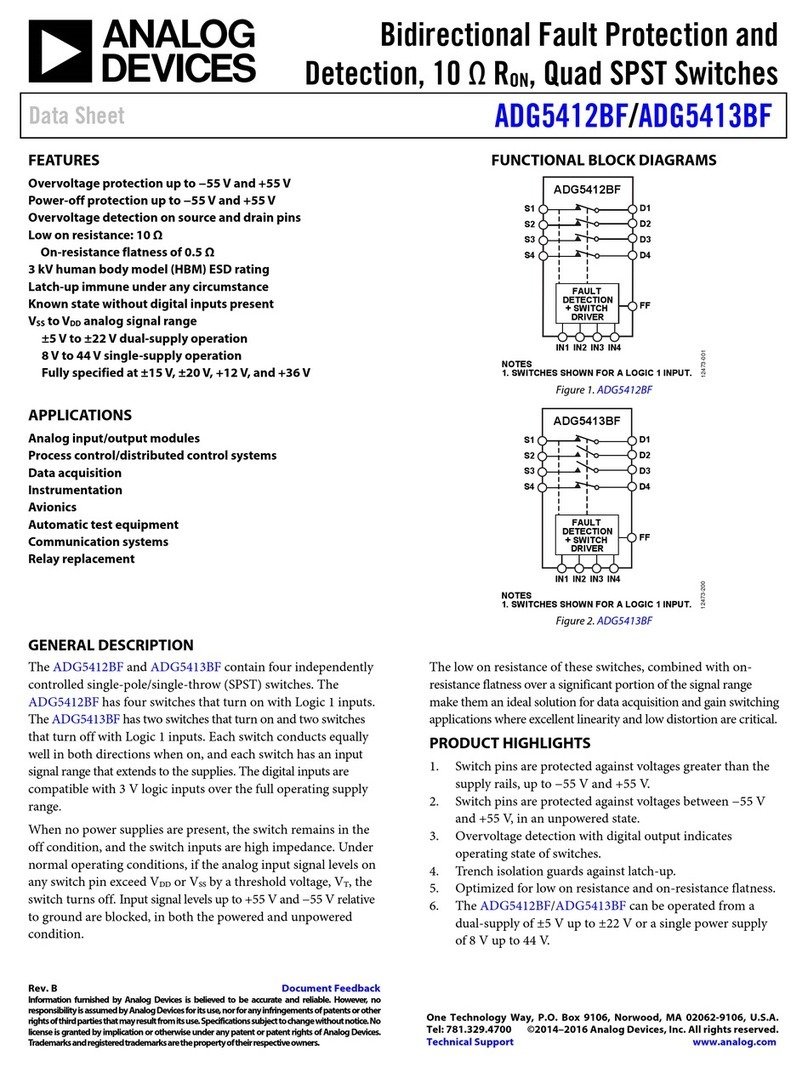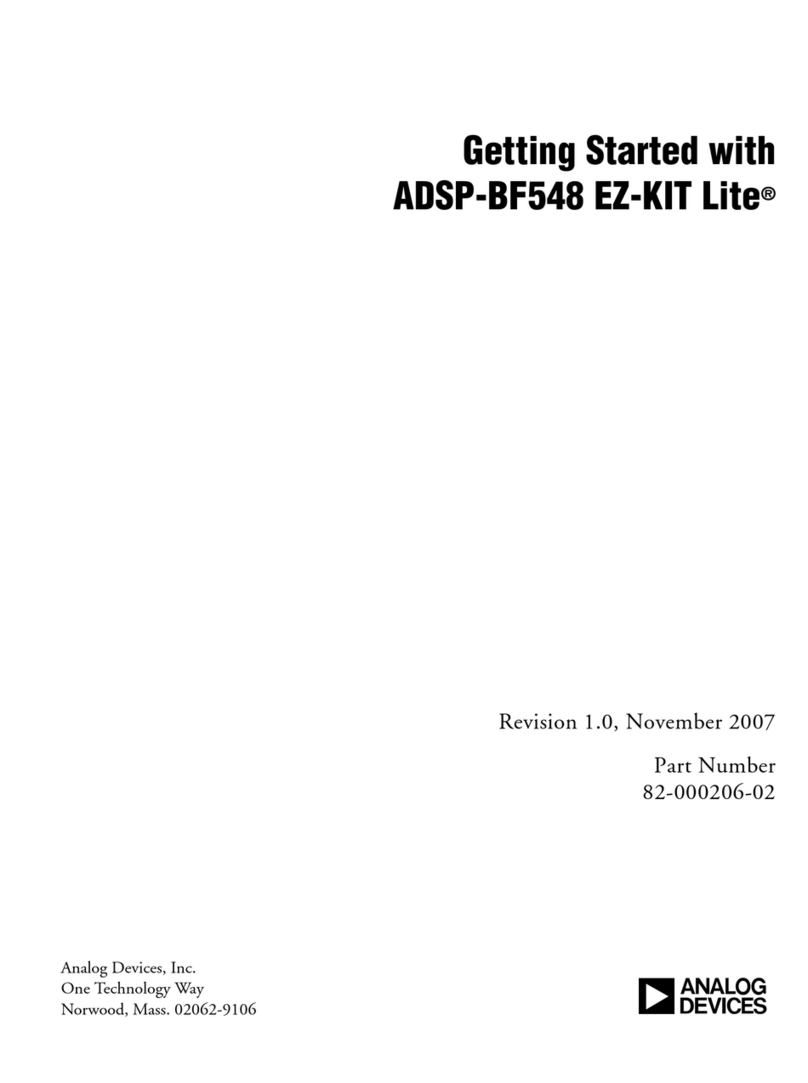
LTM8005
8
Rev. B
For more information www.analog.com
resistor. OPENLED status is updated only during PWM
high state and latched during PWM low state. If not used,
leave floating or tie to GND.
ISMON (Pin J1): LED Current Report Pin. The LED cur-
rent is reported as VISMON = (LED current)/1.6. Leave the
ISMON pin unconnected if not used. When PWM is low,
ISMON is driven to ground. Bypass with a 47nF capacitor
or higher if needed. Do not drive this pin with an external
source.
AUX (Pin J2): Auxiliary Pin. This pin is internally con-
nected to VOUT to ease layout. Conveniently located next
to FB, it is provided to simplify layout of the output voltage
feedback network.
VREF (Pin J6): Voltage Reference Output Pin. Typically 2V.
This pin drives a resistor divider for the CTRL pins, either
for analog dimming or for temperature limit/compensa-
tion of the LED load. It can supply up to 100µA. Do not
drive this pin with an external source.
PWM (Pin J7): PWM Input Signal Pin. A low signal turns
off switching, idles the oscillator, disconnects the VC pin
from all internal loads, and disconnects the output load
from VOUT. PWM has an internal 500kΩ pull-down resis-
tor. If not used, connect to VREF.
RAMP (Pin J8): The RAMP pin is used for spread spec-
trum frequency modulation. The internal switching fre-
quency is spread out to 70% of the original value, where
the modulation frequency is set by 12µA/(2 • 1V • CRAMP).
If not used, tie this pin to GND.
FB (Pin K2): Voltage Loop Feedback Pin. FB is intended
for constant-voltage regulation or for LED protection/open
LED detection. The internal transconductance amplifier
with output VC regulates FB to 1.25V (nominal) through
the DC/DC converter. If the FB input is regulating the loop,
and LED current is less than 0.15A (typical), the OPENLED
pull-down is asserted. This action may signal an open LED
fault. If FB is driven above 1.3V (by an external power sup-
ply spike, for example), the internal N-Channel MOSFET
is turned off and the load is disconnected from VOUT to
protect the LEDs from an overcurrent event. Do not tie
this pin to GND as the SHORTLED will be asserted and
the part will be shut down.
VC (Pin K3): Transconductance Error Amplifier Output Pin.
Used to stabilize the control loop with an RC network. This
pin is high impedance when PWM is low, a feature that
stores the demanded current state variable for the next
PWM high transition. Connect a capacitor between this pin
and GND;a resistor in series with the capacitor is recom-
mended for fast transient response. Do not leave this pin
open, and do not drive this pin with an external source.
SS (Pin K4): Soft-Start Pin. This pin modulates oscillator
frequency and compensation pin voltage (VC). The soft-
start interval is set with an external capacitor. The pin
has a 28µA (typical) pull-up current source to an internal
2.5V rail. This pin can be used as fault timer. Provided the
SS pin has exceeded 1.7V to complete a blanking period
at start-up, the pull-up current source is disabled and a
2.8µA pull-down current is enabled when any one of the
following fault conditions happen:
1. LED overcurrent (ILED > 2.4A)
2. Output short (FB < 0.3V after start-up)
3. Thermal limit
The SS pin must be discharged below 0.2V to re-initiate
a soft-start cycle. Switching is disabled until SS begins to
recharge. It is important to select a capacitor large enough
that FB can exceed 0.3V under normal load conditions
before SS exceeds 1.7V. Do not leave this pin open and
do not drive this pin with an external source.
RT (Pin K5): Switching Frequency Adjustment Pin. Set
the frequency using a resistor to GND. Do not leave the
RT pin open. Do not drive this pin with an external source.
CTRL1, CTRL2 (Pin K6, K7): Current Sense Threshold
Adjustment. CTRL1 and CTRL2 have identical functions.
The output current is regulated by CTRL1 or CTRL2.
The pin with the lowest voltage takes precedence. For
0.1V<VCTRLx<1V the LED current is VCTRLx• 1.5A
less an offset. For VCTRLx > 1.2V the current sense
threshold is constant at the full-scale value of 1.6A. For
1V<VCTRLx<1.2V, the dependence of the current sense
threshold upon VCTRLx transitions from a linear function
to a constant value, reaching 98% of full-scale value by
VCTRLx = 1.1V. Do not leave this pin open. If not used, tie
to VREF. Connect either CTRL pin to GND for zero LED
current.
PIN FUNCTIONS
